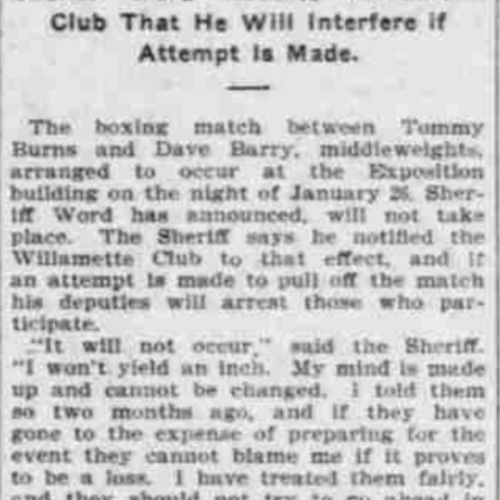The sport of boxing has had a tumultuous time throughout its long history in the United States. Fighting through times of extensive regulation from both State and Federal legislatures, the sport has always managed to survive as a popular spectacle. In the early 1900s, boxing was mostly relegated to fights between local sports clubs with minor crowds and promotion. These matches were purely exhibition as officially judged bouts or bouts with payouts were federally illegal, acting as a ban on prizefighting in general. Even still, local sheriffs would regularly stop matches from happening as an attempt to prevent under-the-table dealings from happening at the scheduled "exhibition" boxing matches. One example of this can be seen in the image gallery with sheriffs being rather steadfast with their insistence to stop any boxing matches to go on at all. Boxing and prizefighting in general would eventually be legalized in the early 1920s alongside a boom of exhibitors bidding to host matches in their theaters.

One of the go-to destinations for boxing matches in the Pacific Northwest around 1920 was the Heilig Theater in Portland, Oregon. As seen in the image above, matches at the Heilig were promoted in newspapers, such as The Sunday Oregonian, with relatively large ads outlining the details of the featured bouts. All indications from various newspaper articles of the time suggest that the sport of boxing was popular enough to regularly sell out the Heilig and for the theater to attract boxers from around the United States. Films featuring famous boxers from around the world were also advertised and shown in the Heilig, capitalizing on the public's intrigue and enjoyment of boxing which the theater had fostered through the regular presentation of live matches in the venue. The sport of boxing's constant presence on the screen and in-person at the Heilig is a fantastic example of the different kind of events and activities that were exhibited in theaters in the early 20th century as a way to satisfy the demands of local audiences.
